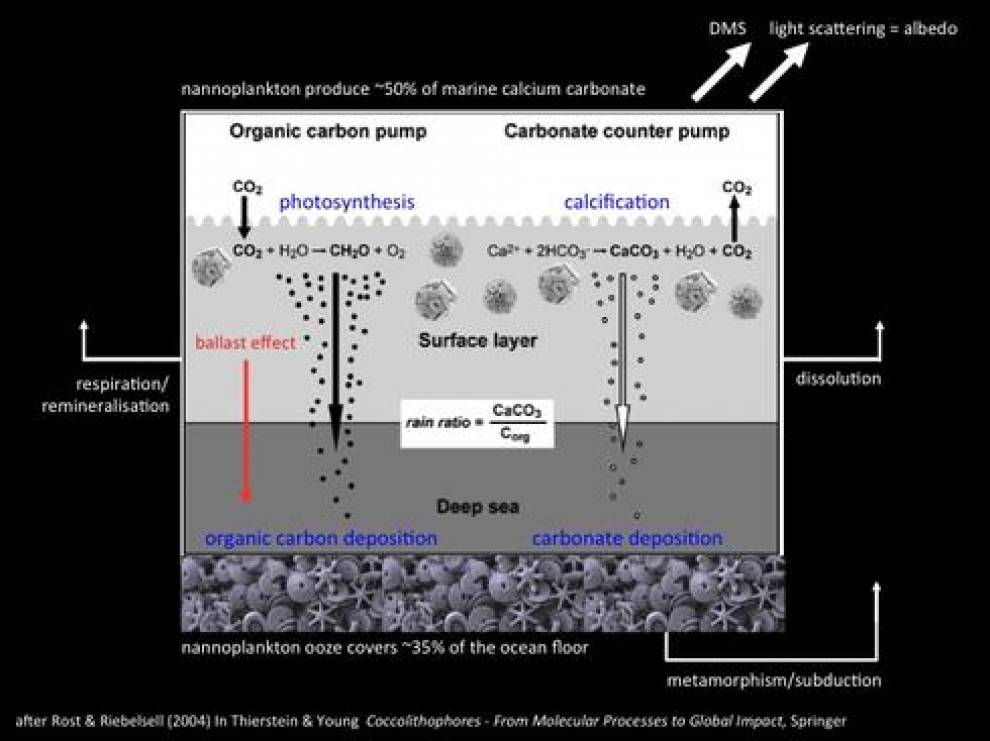Calcareous nannoplankton can be thought of as the rain-forests of the ocean, and similarly participate in global geochemical cycles, such as the carbon and sulphur cycles. They remove CO2 from the ocean and use sunlight to convert this into food, just as plants do on land. But, in addition, they also use carbon to make their coccoliths, composed of calcite (CaCO3).

Coccolithophores and global biogeochemical cycles
Silva Code Source «Indigo: Add a captioned image»flag_text: caption_text: Coccolithophores and global biogeochemical cycles overlayCaptionImage: 0 image_id: /micropalaeontology/images/research/test/biogeochem_cycles.jpg image_alignment: image_size: full-width caption_title: caption_url:
After death, this carbon and calcite may be removed from the active carbon cycle and buried in sediments on the ocean-floor for millions of years. The extra 'ballast' provided by the calcite coccospheres may also increase the amount of carbon exported from the surface ocean, in general. In this way, nannoplankton play an important role in the ability of the ocean to regulate and buffer the global carbon cycle. As the ocean currently absorbs around half of all the carbon produced through fossil fuel burning, it is important we fully understand all the component of these complex systems.
Certain coccolithophores also produce sulphur-bearing compounds (DMSP), which reach the atmosphere as dimethyl sulphide (DMS) and after further oxidation these act as cloud-forming nuclei, therefore influencing the weather in and around where they live. DMS also contributes to the characteristic smell of the sea! On longer timescales, variable production of DMS may affect climate more generally, particularly through cloud albedo effects, i.e. changing the reflectivity of the planet.
 Close
Close

